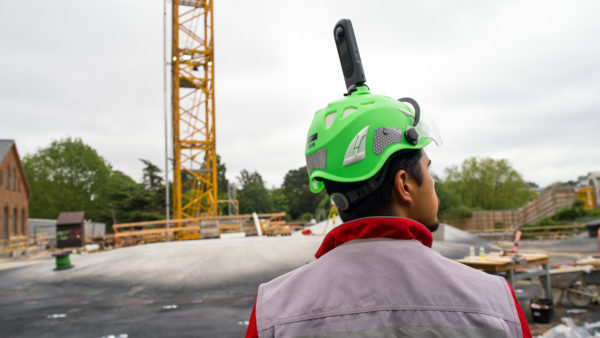No doubt driven by the impact of covid-19, technology development and adoption accelerated in 2020.
And that was reflected in BIM+’s coverage.
Rather than countdown the top five most read technology stories, here we detail the five different types of technologies that were most popular.
Be warned, we’ve listed robots separately here: https://www.bimplus.co.uk/news/construction-robots-2020-rise-machines/
Concrete sensors
https://www.bimplus.co.uk/technology/balfour-beatty-makes-concrete-savings-hk-bim-frien/
There were a few concrete sensor stories that caught BIM+ readers’ attention in 2020, but this was the most popular.
The story reveals that Balfour Beatty’s Hong Kong business, Gammon Construction, has made significant concrete waste savings by integrating concrete sensor data with BIM in what is claimed to be “the world’s first digital twin of site concreting”.
Gammon is using the latest version of Converge’s ConcreteDNA Pro, which integrates concrete sensor data with BIM and provides material performance analytics to form a digital twin.
Drones
https://www.bimplus.co.uk/news/aecom-gets-green-light-fly-non-standard-drones/
There were drone stories aplenty on BIM+ in 2020, but the most popular was this one about Aecom gaining approval from the Civil Aviation Authority to fly drones in congested and complex environments, including highly urbanised areas.
Exoskeletons
https://www.bimplus.co.uk/technology/hilti-jv-set-launch-passive-exoskeleton-autumn/
There weren’t that many exoskeleton stories in 2020, but those that appeared were popular, especially this one about Hilti’s EX0-01 passive exoskeleton. Rather than require an energy supply, it transfers the weight of the arms to the hips via the forearm supports, using mechanical cables. Independent studies and research from German prosthetics firm claim that the device can reduce peak load on the muscles and shoulders by up to 47%.
Software plug-ins
https://www.bimplus.co.uk/technology/rhino-plug-convert-3d-models-revit-gains-widesprea/
While interoperability of systems remains a key topic of debate, stories like this one will be popular: a plug-in for Rhino design software that automates the conversion of 3D models for use in Revit.
Beam, as the plug-in is called (see main image), was developed by MKS DTech to speed up the process of preparing Rhino models for use in BIM, which typically requires complex bespoke software scripting and file management.
3D printing
https://www.bimplus.co.uk/technology/peri-builds-3d-printed-house-germany/
3D printing’s capabilities are evolving swiftly, as highlighted by this story about formwork and scaffolding manufacturer Peri creating the first concrete 3D-printed house in Germany.
The house was built by a 3D concrete printer, which was operated by two people. The printer followed the 160sq m, two-storey house’s design, leaving gaps for pipes and services. Manual work, such as pipe installation, could proceed while it was printing, according to Peri.











